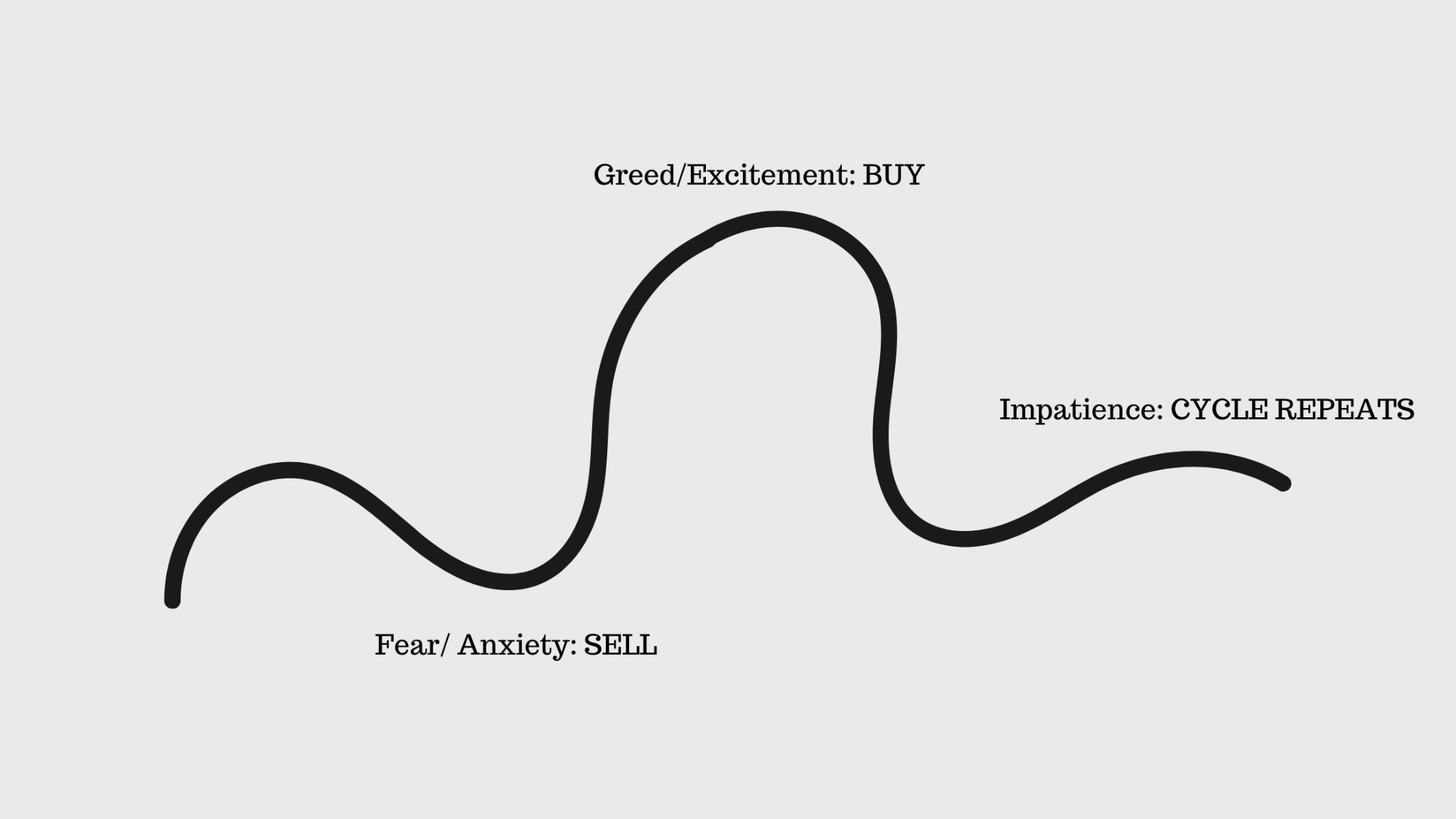In this article
Meera, a 38-year-old DIY investor, manages most of her portfolio through her own research. She follows market gurus, studies stock trends, and keeps up with financial news. Yet, despite her efforts, stock selection feels like a gamble. Some investments soar, while others plummet unexpectedly. The real challenge isn’t just picking stocks, it’s managing her portfolio effectively, knowing when to buy or sell, and maintaining confidence in her investment strategy.
Like Meera, many investors face similar struggles. Traditional investing often relies on intuition, but even seasoned investors aren’t immune to biases, panic-driven decisions, or overconfidence. With thousands of stocks and ever-changing market conditions, even well-planned strategies fail.
Quant investing is changing the game. By leveraging big data, machine learning, and algorithmic models, these funds eliminate emotional biases and replace guesswork with a rules-based, systematic approach. They analyze vast amounts of data in real time, identifying patterns and opportunities human investors might overlook. Instead of gut feelings, quant investing relies on data, ensuring precision, consistency, and risk-adjusted returns.

In this article, we’ll explore 11 key challenges investors face in stock selection and portfolio management. More importantly, we’ll see how Quant approach systematically tackles these stock selection challenges, providing a disciplined, data-driven alternative that enhances decision-making and improves stock market investing returns.
Overwhelming Stock Universe
With over 5,000 listed companies on the NSE and BSE, stock market investing often feels overwhelming when it comes to choosing the right stocks. Sectors like BFSI, IT, Consumer, Infra, and Pharma offered countless opportunities – yet filtering through them all was overwhelming.
For many investors, stock selection often comes down to limited research, biased recommendations, or gut instinct – increasing the risk of poor returns. Traditional stock market investing methods often rely on manual screening, analyst reports, and news sentiment, but these approaches are slow, subjective, and prone to market noise. Moreover, missing key opportunities or chasing short-term trends can lead to suboptimal investments and poor risk-adjusted returns.
How Quant Investing Solves This Challenge
Quant investing uses powerful algorithms to analyze thousands of stocks in real time. Quantitative stock analysis ranges from fundamental investment rules to advanced machine learning models like neural networks and reinforcement learning. Instead of relying on subjective analysis, Quant investing:
✅ Expand the investment universe by evaluating every stock, not just a select few.
✅ Screen and evaluate thousands of stocks efficiently.
✅ Uncover hidden investment opportunities beyond well-known stocks.
Optimal Position Sizing
Meera had carefully chosen her stocks, but deciding how much to invest in each was a different challenge. Should she allocate more to familiar companies? Double down on a stock just because it dipped? Lower allocation to a stock simply because she disliked the promoter?
Like most investors, biases and market noise clouded her allocation decisions, leading to suboptimal position sizing:
🔸 Overweighting Stocks – Investing too much in certain stocks based on familiarity, recent price drops, or regional bias.
🔸 Underweighting Stocks – Under-allocating to strong performers due to personal opinions about a company’s management, industry, or model.
🔸 Market Noise & Impulsiveness – Frequently adjusting allocations based on short-term news, which hurts long-term returns.
Without a structured approach, even a well-picked portfolio can underperform simply due to poor position sizing.
How Quant Investing Solves This Challenge
Quant investing’s data driven strategies remove subjectivity from portfolio allocation, ensuring decisions are driven by data, not emotions. Using systematic position sizing models, they:
✅ Eliminate personal biases by following predefined, backtested allocation strategies.
✅ Use structured allocation strategies like equal-weighting, valuation-based weighting, or risk-adjusted weighting.
✅ Stay immune to market noise by maintaining a disciplined, rule-driven approach.
Mastering Entry and Exit Points
Meera faced a familiar dilemma – some stocks in her portfolio were soaring, while others underperformed. She constantly debated:
🔸 Should she hold on to winning stocks or book profits?
🔸 Should she exit underperforming stocks or stay patient?
🔸 Is now the right time to enter new positions, or should she wait?
Even when she made a rational decision, market fluctuations often made her regret it later, trapping her in a cycle of hesitation and second-guessing.

Without a structured framework, entry and exit decisions become emotional, driven by media noise, short-term price movements, or fear of missing out, leading to inconsistent portfolio management and missed opportunities.
How Quant investing Solves This Challenge
Quant investing removes subjectivity from entry and exit decisions through system-driven, backtested strategies:
✅ Predefined investment horizons – Each stock has a clear entry and exit rule based on data, not emotions.
✅ Backtested portfolio rebalancing framework – Stocks are added or removed based on structured criteria, optimizing returns and managing risk.
✅ Tailored strategies – Models can be optimized or adjusted for short-term, long-term, or liquidity-focused portfolios.
For example, a rule-based model may hold a stock for at least a year, exiting only if earnings fall below a set threshold. Another strategy might reduce small-cap exposure during RBI rate hikes, if historical data supports it.
Bringing Clarity to Risk and Return Expectations
Meera had always relied on past performance to estimate the future potential of her investments. She often found herself asking:
🔸 Will this stock continue to perform well?
🔸 How much risk is she really taking?
🔸 What are the chances of beating the market over time?
Without a structured approach, risk and return expectations in traditional investing remain highly subjective. Many investors rely on historical data, gut feelings, or expert opinions, but with no objective way to test their assumptions.
How Quant investing Solves This Challenge
Quantitative stock selection provides a systematic approach to defining risk and return expectations, ensuring data-driven decisions:
✅ Objective, backtestable systems – Strategies are tested across various market conditions before implementation.
✅ Rolling return analysis – Instead of relying on a single time period, backtesting across multiple investment windows give a realistic long-term view.
✅ Probability-based insights – Investors see the likelihood of different outcomes, such as the chances of losing money, outperforming benchmarks, or achieving peak returns.
For instance, a quant model might reveal that a strategy has an 85% probability of positive returns over three years, but a 20% chance of underperforming during volatile periods.
Overcoming Behavioral Biases
Meera prided herself on making rational investment decisions, yet she often found her decisions to lack sound logical backing. She realized that on multiple instances, her decisions were heavily based on emotions instead of logic, rationale.
She wasn’t alone. Behavioral biases affect every investor, regardless of experience. As Nobel laureate Daniel Kahneman demonstrated, even professionals fall victim to decision-making inconsistencies. In a famous study, doctors were shown identical patient symptoms at different times but often gave different diagnoses, simply due to context, prior experiences, and subconscious biases.

The Hidden Traps of Behavioral Biases
Here are some of the most common biases that lead to suboptimal investing decisions:
🔸 Loss Aversion – Investors feel the pain of losses twice as much as the joy of gains, making them hold on to losing and back stocks longer than they should.
🔸 Overconfidence Bias – Many investors overestimate their ability to predict market movements, leading to excessive risk-taking.
🔸 Endowment Effect – Valuing stocks simply because they already own them, rather than based on merit.
🔸 Hindsight Bias – Believing past events were more predictable than they actually were, leading to misjudgment of one’s ability to make accurate predictions.
🔸 Anchoring – Fixating on a past price point rather than reassessing based on real-time fundamentals.
🔸 Mental Accounting – Treating money differently based on its source, leading to irrational investment choices.
🔸 Availability Bias – Making decisions based on the most recent or memorable news, rather than objective analysis.
How Quant investing Solves This Challenge
Quantitative stock selection eliminates emotion-driven decision-making by applying a disciplined, rules-based framework:
✅ Objective System of Stock Selection – Every stock is evaluated based on quantifiable metrics, not subjective judgment.
✅ Back-Tested Strategies – Models are rigorously tested across historical data to eliminate hindsight bias and overconfidence.
✅ Automated Execution – Predefined rules remove impulsive trading, ensuring consistent application of strategy.
✅ Diversification by Design – Ensures optimal risk management and prevents overexposure to specific stocks or sectors.
✅ Stop-Loss Mechanisms – Enforces risk controls, reducing the impact of loss aversion bias.
Avoiding Panic Selling During Market Downturns
Meera had been diligently investing in the stock market, steadily growing her portfolio over the years. But when a major market correction hit, panic set in. Watching stock prices tumble daily, she felt an overwhelming urge to sell and protect her capital. The news was filled with pessimistic forecasts, and social media amplified the fear. Against her initial investment plan, she exited her positions, only to see the market rebound months later, causing permanent capital erosion and regret. .
This reaction is common. During past market corrections and crashes, investors who gave in to fear often sold at the worst possible time, while those who stayed invested in quant-driven strategies saw significant portfolio recoveries within months. This is the most primary reason investors face permanent capital erosion.
How Quant investing Solves This Challenge
Meera’s experience could have been different with a quant-driven strategy. Unlike human investors who react emotionally, quantitative stock analysis follows predefined, data-driven models to make rational investment decisions, even in downturns.
✅ Algorithm-Driven Risk Management – Quant models use statistical techniques like Value at Risk (VaR) and Conditional VaR (CVaR) to manage portfolio risk.
✅ No Emotional Trading – Automated stock selection ensures buy/sell decisions are based on fundamentals, not fear or speculation.
✅ Systematic Rebalancing – Instead of panic selling, quant models adjust portfolio allocations strategically, maintaining a disciplined approach to downturns.
By removing emotions from investment decisions, Quant investing helps investors like Meera stay invested with confidence and discipline, avoiding the costly mistakes that panic selling often leads to.
Maintaining Consistency in Investment Strategy
Meera had always believed in long-term investing, but like many others, she often found herself drifting away from her original strategy. Meera’s strategy includes buying stock based on long-term fundamentals. During the bull market of 2021, she identified high growth-tech stocks believing in their long-term prospect. However, as the market corrected in 2022, and interest rate climbed, her approach changed. Instead of relying on long-term fundamentals, she started paying attention to short-term prospects of the tech industry. She sold certain stocks at a loss. Looking back, she realized that her inconsistency in approach had cost her valuable returns.
Meera wasn’t alone – many investors abandon their strategies due to market noise, psychological biases, or emotional decision-making. Without a structured, rules-based approach, it’s easy to fall into the trap of reacting to short-term fluctuations rather than sticking to a well-defined plan.
How Quant Investing Solves This Challenge
To overcome this, Meera explored quant investing, which removes emotional decision-making and enforces a consistent, data-backed strategy.
✅ Algorithm-Driven Approach – Meera no longer had to second-guess her decisions. Quant models strictly followed predefined mathematical rules, ensuring her investments remained consistent.
✅ No Emotional or Impulse-Driven Decisions – The days of panic-selling and chasing trends were behind her. Meera’s portfolio now remained unaffected by market hype and short-term news cycles.
✅ Historically Validated Strategies – Meera knew that every buy or sell decision was backed by data, rigorous backtesting, and time-tested models, rather than speculation.
✅ Disciplined Execution – Whether the market was soaring or crashing, Meera’s portfolio adhered to objective, pre-set rules, keeping her on track for long-term wealth creation.
Fear of Missing Out
Meera often found herself tempted by market trends, especially when she saw others making quick profits. In 2021, she noticed a frenzy around newly listed companies – everyone was talking about Zomato, Paytm, and Nykaa. Influenced by the hype, she rushed to invest, fearing she would miss out on potential gains. However, she later realized that her decision was driven more by FOMO than by a structured investment plan.
This isn’t uncommon. Many investors, in moments of excitement, deviate from their investment philosophy and chase momentum stocks without analyzing long-term fundamentals. History has shown similar patterns, where retail investors flock to hyped stocks during bull markets, only to rethink their decisions later.
How Quant Investing Solves This Challenge
To break free from such impulsive investing, Meera turned to utilize the benefits of rule-based investing for stock selection, which eliminate emotional decision-making and enforce a systematic, rule-based approach:
✅ System-Driven Investments – Unlike Meera’s earlier impulsive decisions influenced by market noise, quant approach strictly follow predefined models, ensuring she invests based on data, not on noise and trend.
✅ No Deviation from Investment Philosophy – Meera’s portfolio now adheres to a structured framework, preventing her from chasing hype-driven stocks.
✅ No Panic, No FOMO – With quant strategies, buy and sell decisions are made without influence from media noise or social trends, helping Meera stay focused on long-term wealth creation.
Portfolio Creation from Low to High Risk Appetite
Meera had always struggled with managing multiple investment strategies to match her different financial goals. For critical, short-term goals like her child’s education, she preferred fixed deposits, bonds or low-risk equity strategies. At the same time, for long-term, less critical goals – like buying a second holiday home, she was willing to take on higher risk.
However, managing even a single portfolio with 20-30 stocks was a demanding task for a traditional DIY investor. Tracking multiple portfolios, each aligned to different risk levels, made it exponentially harder. Every portfolio required monitoring various stocks, adjusting allocations, and reacting to market shifts, all without a structured system. A rally could push high-risk portfolios beyond acceptable limits, while downturns might trigger premature exits.
Without a systematic, rule-based approach, keeping up with so many moving parts became nearly impossible, leading to decisions driven more by overwhelm than strategy.
How Quant Investing Solves This Challenge
To bring structure to her investments, Meera explored Quant investing, which provided a systematic, algorithm-driven approach to managing multiple strategies:
✅ Large Opportunity Set & Error-Free Calculations – Unlike manual investing, where analyzing a vast stock universe is challenging, Quant strategies process thousands of stocks efficiently. This allows for the selection of a diverse set of stocks across multiple strategies, ensuring each portfolio aligns with its unique goal.
✅ Defining & Creating Multiple Rules – With Quant investing, Meera could create and backtest different investment rules for various risk appetites. Whether she wanted a conservative strategy for essential financial goals or an aggressive approach for long-term wealth creation, Quant models helped refine and validate these strategies based on historical data.
✅ Clear & Objective Risk-Return Assessment – Each strategy’s risk and return parameters were precisely defined, enabling a structured evaluation of different risk levels. This enabled Meera to create portfolios clearly defined for her different risk goals. .
Keeping Up with Constant Market Changes
Meera often found herself overwhelmed by the sheer volume of market updates. Interest rate hikes, earnings reports, new regulations, sectoral trends – there was always too much information to track. She would sometimes hear about a major economic shift after the markets had already reacted, leaving her either holding underperforming stocks or missing key opportunities.
One such instance was when the RBI raised interest rates. Banking stocks took a hit, but Meera didn’t react in time. At the same time, the AI boom was driving IT stocks upward, yet she was too focused on news about another sector to notice. With so many moving parts, she realized that staying ahead of market shifts was nearly impossible without a structured approach.
How Quant Investing Solves This Challenge
When Meera gained a deeper understanding of what is the quantitative stock selection model and then switched to quant investing, she no longer had to worry about tracking every update manually:
✅ Automated Market Monitoring – Quant investing processes financial reports, economic indicators, and alternative data (like social media trends and global events) in real time, ensuring no critical update is missed.
✅ System-Driven Decision Making – Quant long-term models have inbuilt rules to react to various market updates. These rules are rigorously tested and ready to be implemented whenever a relevant market change occurs.
✅ Continuous Portfolio Rebalancing – Unlike traditional investors who rely on periodic portfolio reviews, Quant investing dynamically adjusts allocations based on real-time developments, ensuring Meera’s investments remain optimized.
✅ Adaptive Strategies – Advanced AI models continuously learn from market behavior, evolving to stay relevant even in unpredictable economic and geopolitical conditions.
Now, instead of constantly monitoring market updates and second-guessing investment moves, Meera’s portfolio adapts automatically, keeping her ahead of trends without the stress of tracking every single development.
Struggling to Analyze Fundamental Patterns
Meera knew that successful investing required research, but she often found herself too caught up in analyzing individual stocks. With over 5,000 listed companies in India, diving deep into financial statements, revenue trends, and governance reports for each one was overwhelming.
Instead of recognizing broader, repeatable fundamental patterns, she was lost in stock-specific details. For instance, while evaluating mid-cap IT stocks like Tata Elxsi, Persistent Systems, and L&T Technology Services, she focused on isolated financial metrics rather than identifying common growth drivers across the sector. This approach made it difficult to develop a scalable investment strategy.
How Quant Investing Solves This Challenge
When Meera explored Quant investing, she saw how it shifted the focus from analyzing individual stocks to identifying long-term fundamental patterns:
✅ Identifying Stable Market Trends – Instead of getting lost in stock-specific details, quant models analyze a vast number of companies at once to detect capital market and business trends that repeat over time.
✅ Large-Scale Pattern Recognition – By studying thousands of stocks simultaneously, quant strategies uncover fundamental patterns that persist across different macroeconomic cycles, making them more stable and reliable than stock-by-stock analysis.
✅ Data-Driven Consistency – Unlike traditional investing, which relies on subjective judgment, quant investing applies systematic, rule-based methods to identify companies that align with proven, repeatable success factors.
Start Your Quant Investment Journey Today
India’s investment landscape is undergoing a transformation, with quant-driven asset management gaining momentum like never before. As of 2023, quant-based funds have been growing at a CAGR of 18%, reflecting a rising trust in algorithm-driven strategies. Leading funds such as FidelFolio Shivalik Compounder, Nippon India Quant Fund, and ICICI Prudential Quant Fund are already leveraging automated rebalancing to maintain portfolio discipline, ensuring investors stay on track regardless of market fluctuations. At the same time, robo-advisory platforms like smallcase, Zerodha Varsity, and Kuvera have made automated investing more accessible, contributing to a 35% increase in user adoption, as reported by SEBI.
Yet, despite these advancements, many investors still struggle with market volatility, behavioral biases, and the complexities of manual stock selection challenges. Traditional investing methods, while familiar, often fall short when it comes to efficiency and precision. This is where Quant investing is reshaping the future of wealth creation – harnessing AI, machine learning, and deep financial analytics to minimize risk, optimize asset allocation, and enhance returns in a systematic, objective manner.
At FidelFolio, we help investors navigate this evolving landscape with expert-backed quant insights designed to simplify decision-making and unlock smarter investment opportunities. Whether you’re looking to identify the right Quant investing approach, evaluate risk-adjusted returns, or build a portfolio that aligns with your financial goals, we provide the data-driven strategies to make investing more effective.
Take the first step toward intelligent, algorithm-driven investing with FidelFolio – because in a world powered by data, your portfolio should be too.
FAQs
Q. What are the common challenges in stock selection?
Ans. Picking the right stocks isn’t easy. There’s an overwhelming amount of financial data to analyze, from earnings reports to market trends, and it’s tough to separate noise from valuable insights. Plus, emotions often get in the way, leading to bad decisions. Without a structured approach, many investors struggle to consistently pick winning stocks.
Q. How does quant investing solves stock selection challenges?
Ans. Quant investing removes guesswork by using data-driven models to analyze stocks systematically. Instead of relying on opinions or gut feelings, it processes thousands of data points, like revenue growth, valuations, and momentum – to identify the strongest investment opportunities. The result? A more objective, efficient, and disciplined approach to stock selection.
Q. What role does machine learning play in stock picking?
Ans. Machine learning helps spot trends and patterns that aren’t always obvious to human investors. It sifts through massive amounts of market data, learns from past behaviors, and continuously refines its stock selection process. Over time, this means smarter, faster, and more adaptive investment decisions.
Q. What are the benefits of rule-based investing for stock selection?
Ans. With rule-based investing, decisions aren’t influenced by emotions or market noise. Stocks are selected based on predefined criteria – like strong earnings, low debt, or high momentum, ensuring consistency and discipline. This structured approach helps avoid common investor mistakes and improves long-term returns.
Q. How does data-driven analysis improve stock selection accuracy?
Ans. Numbers don’t lie. Data-driven investing filters out hype and focuses on measurable factors like financial health, historical trends, and economic indicators. By considering real data rather than speculation, it improves the accuracy of stock selection, reducing the risk of picking underperforming stocks.
Q. How does FidelFolio’s quant strategy solve stock selection problems?
Ans. FidelFolio uses a blend of big data, machine learning, and financial analytics to find the best stocks at any given time. It ranks stocks based on multiple performance factors, adapts to market changes, and ensures your portfolio remains optimized – helping investors make better choices without spending hours on research.
Q. Can beginners use quant investing for better stock selection?
Ans. Absolutely. You don’t need to be a market expert to benefit from quant investing. Platforms like FidelFolio simplify the process, offering data-backed recommendations and automated strategies. Whether you’re new to investing or just want a smarter way to pick stocks, quant investing makes it easier to make informed decisions.
💬 Join Our WhatsApp Channel
Be the first to get investment learning insights, exclusive updates about FidelFolio research, products, and reports, and instant notifications about upcoming webinars. Join our WhatsApp channel and never miss an opportunity to stay informed.
Join WhatsApp Channel